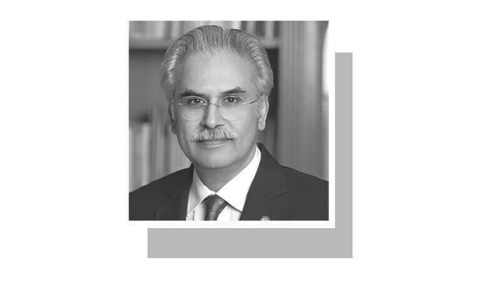LONDON: For decades, India’s power engineers had a dream: “One Nation. One Grid. One Frequency.” At the start of this year, that vision was realised. India finally has a nationwide power system stretching from Tamil Nadu in the south to Kashmir in the north, Gujarat in the west to Nagaland in the east.
On Dec 31, India commissioned the last link, a high-voltage transmission line between Raichur and Solapur, connecting the southern regional grid to the four other grids serving the north, east, west and northeast, which had been successively integrated since 1991.
The whole of India’s electricity system was synchronised and started to function as one giant machine. Unification is a powerful symbol of national identity and modernisation as well as enabling the system to operate more efficiently.
Britain’s seven regional networks were first synchronised as long ago as 1937 in an unauthorised night-time experiment by electrical controllers and officially integrated in the winter of 1938.
The United States integrated almost its entire network into two giant interconnections that link into neighbouring parts of Canada and Mexico: the Eastern Interconnection in 1962 and the Western Interconnection in 1967.
China, too, is rapidly linking its regional grid operations into a nationwide super-grid.
But India’s belated arrival in the super-grid club cannot disguise the underdevelopment of the country’s electricity system.
More than 300 million people in India lack access to electricity, according to the World Bank and the International Energy Agency, compared with fewer than 3m in China.
In 2012-13, India’s power system was able to supply a peak of just 124,000 megawatts for a country of more than 1.2 billion people. By contrast, Britain’s power stations generated a maximum of 55,000 MW for a country of 60m.
On average, Indians consume 917 kilowatt/hours each per year compared with 3,300 in China, 5,400 in Britain and 13,000 in the US.
Generation is dominated by old and inefficient coal-fired units that belch soot, toxic pollutants and carbon dioxide. Coal accounts for 60 per cent of India’s installed generation capacity with some hydro (16pc) and renewables (13pc) as well as smaller amounts of natural gas and nuclear.
Power cuts are frequent as demand often outstrips supply. More than 10pc of electricity demand routinely goes unmet at peak periods, according to India’s Central Electricity Authority.
India’s grid has proved worryingly unmanageable and unstable — even before the synchronisation of a fifth region with hundreds of millions more customers.
In July and August 2012, India’s two worst blackouts in history cascaded across the north and the east, cutting electricity to states and territories home to more than half of the country’s population.
Ironically, the only region spared was the southern one because it was not synchronised with the rest of the grid. The lack of direct connection served as a firebreak as blackouts rippled across the network, the danger foreseen by Britain’s grid engineers in the 1920s and 1930s.
Blackouts occurred because during the intense summer heat, which stretched the country’s generation and transmission resources to the limit, many of India’s state electricity boards ignored instructions to reduce power deliveries to their customers. A cascading failure resulted.
But it is not just too much consumption that can destabilise the grid. Last month, the northern grid collapsed when thunderstorms and heavy rain hit Delhi, Uttar Pradesh, Haryana and Uttarakhand. Bad weather caused a sudden reduction in demand. As voltage and frequency surged, 69 high-voltage transmission lines disconnected themselves to protect equipment.
Around 8,000 MW of load was dumped in half an hour, equivalent to 6pc of India’s power supply, including 3,500 MW in Delhi, according to a report prepared by the Central Electricity Authority.
Cascading power failures are not unique to India. The US, Canada, Brazil and Indonesia have suffered partial grid collapses. But the frequency with which India’s grid has lost control is a cause of concern.
The fundamental problem in India’s electricity industry is political. The industry is fragmented between a relatively weak Central Electricity Authority and Power Grid of India, which manage the network, and strong state electricity boards that answer to local politicians. The boards control regional distribution and generation.
Prices have been strictly controlled, and in many areas cheap electricity and the promise of connection have been used as a political tool. Subsidisation, especially for farmers, and non-payment of electricity bills are endemic.
The result is that Indians pay too little for electricity. Those who have access often use it wastefully while millions more have no access at all. The electricity system needs much more centralisation. It is too easy for state electricity boards to obstruct realistic pricing and grid management. The synchronisation of regional grids must be accompanied by more integration of electricity suppliers.
Gujarat, the state formerly run by new Prime Minister Narendra Modi, has been touted for its efficient and commercially run electricity industry, which featured in the recent national election campaign. Since 2003, power thefts have been slashed. The state separated agricultural and residential power systems. Rural homes pay higher bills but get more reliable power supply.
“Gujarat now supplies near 24-hour electricity not only to its large cities and towns but to the 18,000 villages too,” according to The Times of India. During recent power shortages, Gujarat has been selling its surplus power to neighbouring Rajasthan, Haryana and Delhi.
Gujarat’s well-run electricity system could be a model for the rest of the country. But first, India needs to sweep away the entrenched interests in the state electricity boards and shift to a full cost-recovery model.—Reuters
Published in Dawn, June 11th, 2014














































